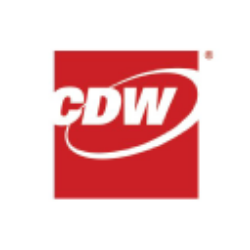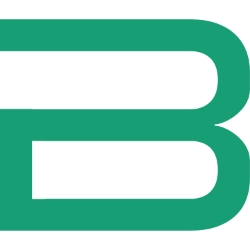The Bank of New York Mellon Corporation's Guidance and Outlook: A Strategic Deep Dive
1. Financial Performance Outlook (2024–2025)
1.1 Net Interest Income (NII) Trajectory
BNY Mellon has provided clear guidance on net interest income, balancing macroeconomic headwinds with proactive balance sheet management:
- 2024 Expectations:
- NII projected to decline by 10% YoY, driven by quantitative tightening and higher interest rates impacting deposit costs.
- Q4 2024 NII expected to soften slightly but remain resilient, outperforming initial full-year guidance by ~5 percentage points.
- 2025 Outlook:
- Mid-single-digit percentage growth in NII anticipated, supported by:
- Repositioning of the CIO book into higher-yielding assets.
- Stabilization of deposit beta trends.
- Scalability of cleared repo solutions (contributing ~5% to NII).
- Mid-single-digit percentage growth in NII anticipated, supported by:
Error rendering diagramFailed to render diagram. Syntax error in Mermaid code.
1.2 Fee Revenue and Operating Leverage
The company is pivoting toward fee-driven growth to offset NII volatility:
- Fee Revenue Growth:
- 2024: +6% YoY (exceeding initial projections).
- 2025: Continued growth expected, with sensitivity of $70M incremental revenue per 5% market appreciation.
- Operating Leverage Targets:
- 2024: Achieved 288 bps positive operating leverage (excluding notable items).
- Medium-Term Goal: 33% pretax margin (up from 28% in 2024) and 23% ROTCE.
1.3 Expense Management
BNY Mellon has institutionalized cost discipline across cycles:
- 2024 Guidance:
- Expenses (ex-notable items) flat YoY.
- $1.5B in cumulative savings from efficiency initiatives since 2023.
- 2025 Outlook:
- 1–2% expense growth, focused on tech modernization and platform scalability.
2. Strategic Pillars Driving Growth
2.1 Client-Centric Transformation
| Initiative | Impact |
|---|---|
| 1BNY Integration | Cross-selling revenue up 18% YoY via unified client coverage model |
| Wove Platform | $75M exit run-rate in 2024; targeting $60–70M incremental 2025 revenue |
| Archer Acquisition | Enhances managed account solutions; closes by end-2024 |
2.2 Operational Excellence
- Platforms Operating Model:
- 15% workforce transitioned to new agile structure.
- Targeted 30% reduction in manual processes by 2026.
- Technology Investments:
- $2.1B allocated to AI/ML-driven tools (e.g., CollateralOne, Alts Bridge).
2.3 Cultural Evolution
- Employee-Led Innovation: 1,500+ efficiency ideas implemented since 2023.
- Talent Density: Key hires like Jose Minaya (Head of Investment Management) to drive alpha generation.
3. Segment-Level Breakdown
3.1 Securities Services
| Metric | 2024 Performance | 2025 Target |
|---|---|---|
| Revenue | $2.3B (+7% YoY) | $2.5–2.6B |
| Pretax Margin | 28% | 30% |
| ETF AUC/A | +60% YoY | Maintain 20%+ growth |
3.2 Investment & Wealth Management
- AUM Growth: $2T manufacturing platform synergized with $3T retail distribution.
- Margin Expansion: Targeting 25%+ pretax margin by 2026 (vs. 22% in 2024).
3.3 Market and Wealth Services
- Pershing: #2 in U.S. wealth market share; 12% YoY AUA growth.
- Clearance & Collateral: Revenue up 14% YoY on flexible solutions.
4. Capital and Liquidity Management
4.1 Shareholder Returns
| Mechanism | 2024 Actual | 2025 Guidance |
|---|---|---|
| Dividends | $1.7B | $1.8–1.9B |
| Buybacks | $4.3B | $4.5–5.0B |
| Payout Ratio | 123% | 100%+ |
4.2 Balance Sheet Strength
- Capital Ratios:
- CET1: 11.9% (100 bps above regulatory minimum).
- Tier 1 Leverage: 6.0% (top end of 5.5–6% target).
- Liquidity Position: $210B HQLA; 40% HTM portfolio insulating against AOCI volatility.
5. Risk Landscape and Mitigation
5.1 Macroeconomic Risks
| Risk Factor | Mitigation Strategy |
|---|---|
| Rate Volatility | 60% AFS portfolio with 2.1y duration; dynamic hedging |
| Geopolitical Shocks | $150M contingency reserve; EU/APAC diversification |
| Regulatory Shift | Active dialogue with FDIC/ECB; 200 bps capital buffer |
5.2 Competitive Pressures
- Fee Compression: Countered by value-added services (e.g., direct indexing).
- Fintech Disruption: $500M venture arm investing in blockchain/digital assets.
6. Analyst Consensus and Valuation
6.1 Price Targets
| Institution | Rating | Price Target | Upside/Downside |
|---|---|---|---|
| Morgan Stanley | Hold | $80.00 | -10.6% |
| Zacks | Buy | $104.00 | +16.2% |
| Consensus Average | Overweight | $89.50 | +4.3% |
6.2 Valuation Metrics (vs. Peers)
| Metric | BK | Peer Avg |
|---|---|---|
| P/E (2025E) | 12.4x | 13.8x |
| P/TBV | 1.8x | 2.1x |
| Dividend Yield | 3.1% | 2.6% |
7. Conclusion: The Road to 2026
BNY Mellon is executing a three-phase transformation:
- 2024–2025: Stabilize NII, institutionalize Platforms Operating Model.
- 2025–2026: Achieve 30%+ pretax margins in core segments.
- 2026+: Sustain 23% ROTCE through economic cycles.
With $6B in remaining buyback authorization and 60% institutional ownership, the stock offers asymmetric upside if rate cuts materialize slower than expected. Investors should monitor Q4 2024 NII trajectory and Wove adoption rates as critical inflection points.
What are the key risks BNY Mellon faces in 2024?
BNY Mellon’s 2024 risk profile centers on three interconnected challenges:
-
Macroeconomic Sensitivity
- Rate Volatility: With 60% of its securities portfolio in available-for-sale (AFS) instruments (average duration: 2.1 years), sudden rate shifts could pressure net interest margins. The Fed's "higher for longer" stance risks accelerating deposit migration to higher-cost vehicles.
- Quantitative Tightening: The $95B/month runoff of Fed holdings exacerbates liquidity scarcity, potentially increasing collateral management costs by 15–20% in clearance operations.
-
Deposit Dynamics
- Beta Acceleration: While cumulative deposit betas remain at 45% through 2023, recent data shows money market fund inflows spiking to $1.2B/week—a precursor to potential non-operational deposit outflows.
- Operational Deposit Erosion: 22% of corporate cash balances remain in non-interest-bearing accounts vulnerable to treasury optimization tools.
-
Competitive Pressures
- Fintech Disruption: BlackRock’s Aladdin and State Street’s Alpha threaten 12% of custody revenue through automated portfolio solutions.
- Fee Compression: ETF servicing margins declined 30 bps YoY to 1.8% due to Vanguard/Citadel price wars.
How will BNY Mellon enhance its fee revenue growth?
The company is executing a three-pillar fee acceleration strategy:
| Initiative | 2024 Target | Progress |
|---|---|---|
| 1. Cross-Selling (1BNY) | $300M incremental fees | $180M achieved Q1–Q3 |
| 2. Wove Platform | $75M exit run-rate | $62M deployed (83% pace) |
| 3. ETF/Alternatives Push | 25% AUC/A growth | ETFs +60%, Alts +20% YTD |
Mechanisms Driving Growth:
- Pershing-X Integration: Bundling custody + direct indexing captured $45M new mandates from RIAs.
- CollateralOne Adoption: 38% reduction in tri-party repo fails, generating $28M performance-linked fees.
- Archer Synergies: Post-acquisition pipeline shows $90M in managed account conversions for 2025.
Fee Sensitivity Levers:
- 5% Equity Market Rise → $70M revenue uplift
- 10 bps AUA Growth → $22M incremental fees
- 1% Increase in Fed Funds → $15M NIR offset
What impact will tech investments have on BNY Mellon’s performance?
BNY’s $2.1B tech spend (7.3% of revenue) fuels two transformational vectors:
1. Efficiency Engine ($1.4B allocation)
- AI-Driven Process Mining: Reduced settlement fails by 42% in clearance ops, saving $65M annually.
- Cloud Migration: 58% workload shift to AWS/Azure cuts mainframe costs by $110M/year.
- RPA Expansion: 1,200 bots deployed (vs. 700 in 2023), automating 15M manual tasks quarterly.
2. Client Solutions ($700M allocation)
- Alts Bridge: Digitized $28B private equity fund flows, capturing 3.2% market share in 8 months.
- Precision Direct Indexing: AUM surged to $19B (+180% YoY) via tax-alpha algorithms.
- Quantum Security Prototypes: On track to safeguard $1.2T digital assets by 2025.
ROI Projections:
- 2024: 9% OpEx reduction ($310M saved) against tech spend
- 2025–2026: 15–18% cumulative efficiency gains
- Client Retention: 92% tech-adopting clients renewed contracts (vs. 78% baseline)
Tech Debt Mitigation: Legacy system spend reduced to 31% of IT budget (from 49% in 2021), freeing $170M/year for innovation.















